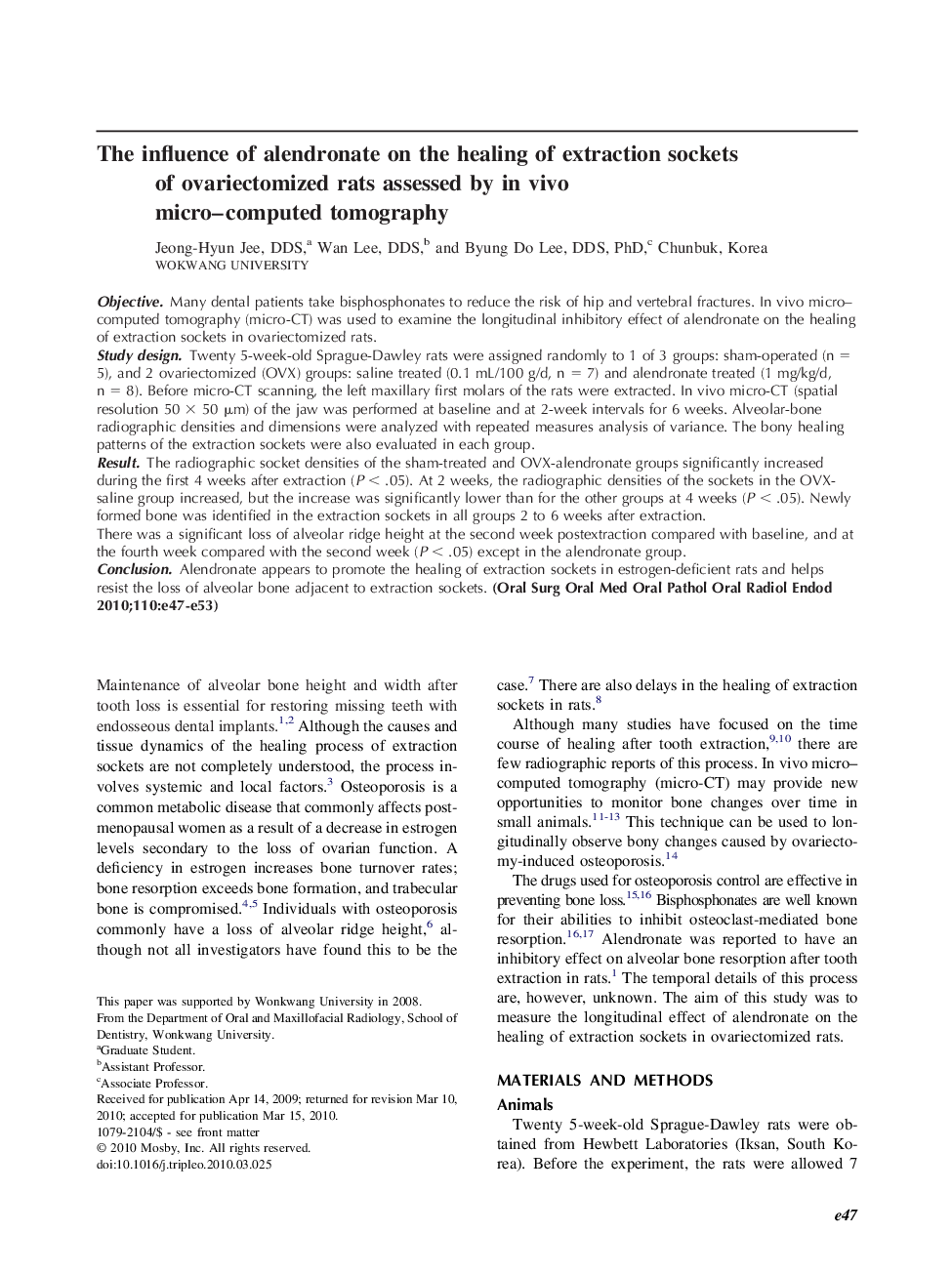| Article ID | Journal | Published Year | Pages | File Type |
|---|---|---|---|---|
| 3167524 | Oral Surgery, Oral Medicine, Oral Pathology, Oral Radiology, and Endodontology | 2010 | 7 Pages |
ObjectiveMany dental patients take bisphosphonates to reduce the risk of hip and vertebral fractures. In vivo micro–computed tomography (micro-CT) was used to examine the longitudinal inhibitory effect of alendronate on the healing of extraction sockets in ovariectomized rats.Study designTwenty 5-week-old Sprague-Dawley rats were assigned randomly to 1 of 3 groups: sham-operated (n = 5), and 2 ovariectomized (OVX) groups: saline treated (0.1 mL/100 g/d, n = 7) and alendronate treated (1 mg/kg/d, n = 8). Before micro-CT scanning, the left maxillary first molars of the rats were extracted. In vivo micro-CT (spatial resolution 50 × 50 μm) of the jaw was performed at baseline and at 2-week intervals for 6 weeks. Alveolar-bone radiographic densities and dimensions were analyzed with repeated measures analysis of variance. The bony healing patterns of the extraction sockets were also evaluated in each group.ResultThe radiographic socket densities of the sham-treated and OVX-alendronate groups significantly increased during the first 4 weeks after extraction (P < .05). At 2 weeks, the radiographic densities of the sockets in the OVX-saline group increased, but the increase was significantly lower than for the other groups at 4 weeks (P < .05). Newly formed bone was identified in the extraction sockets in all groups 2 to 6 weeks after extraction.There was a significant loss of alveolar ridge height at the second week postextraction compared with baseline, and at the fourth week compared with the second week (P < .05) except in the alendronate group.ConclusionAlendronate appears to promote the healing of extraction sockets in estrogen-deficient rats and helps resist the loss of alveolar bone adjacent to extraction sockets.
